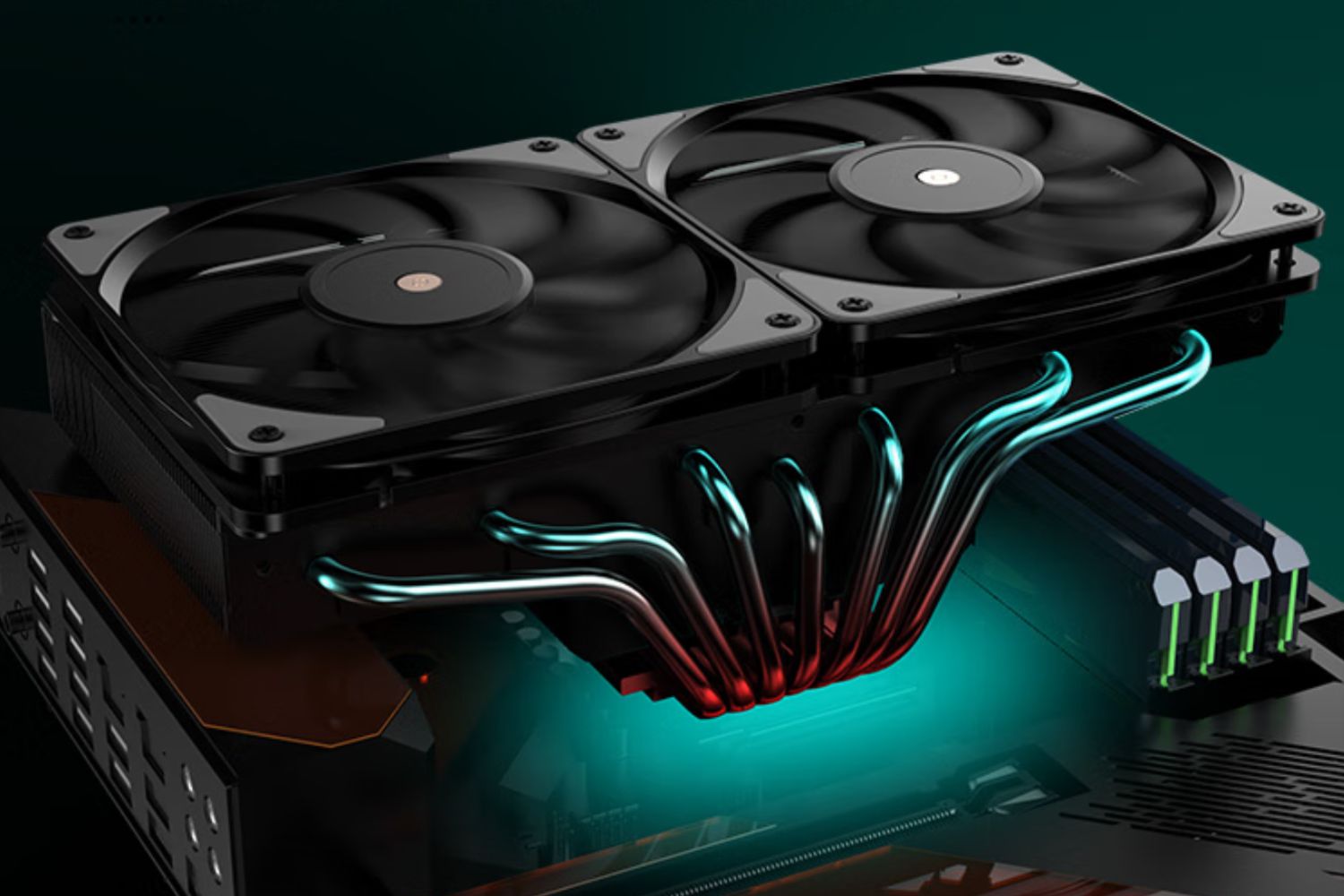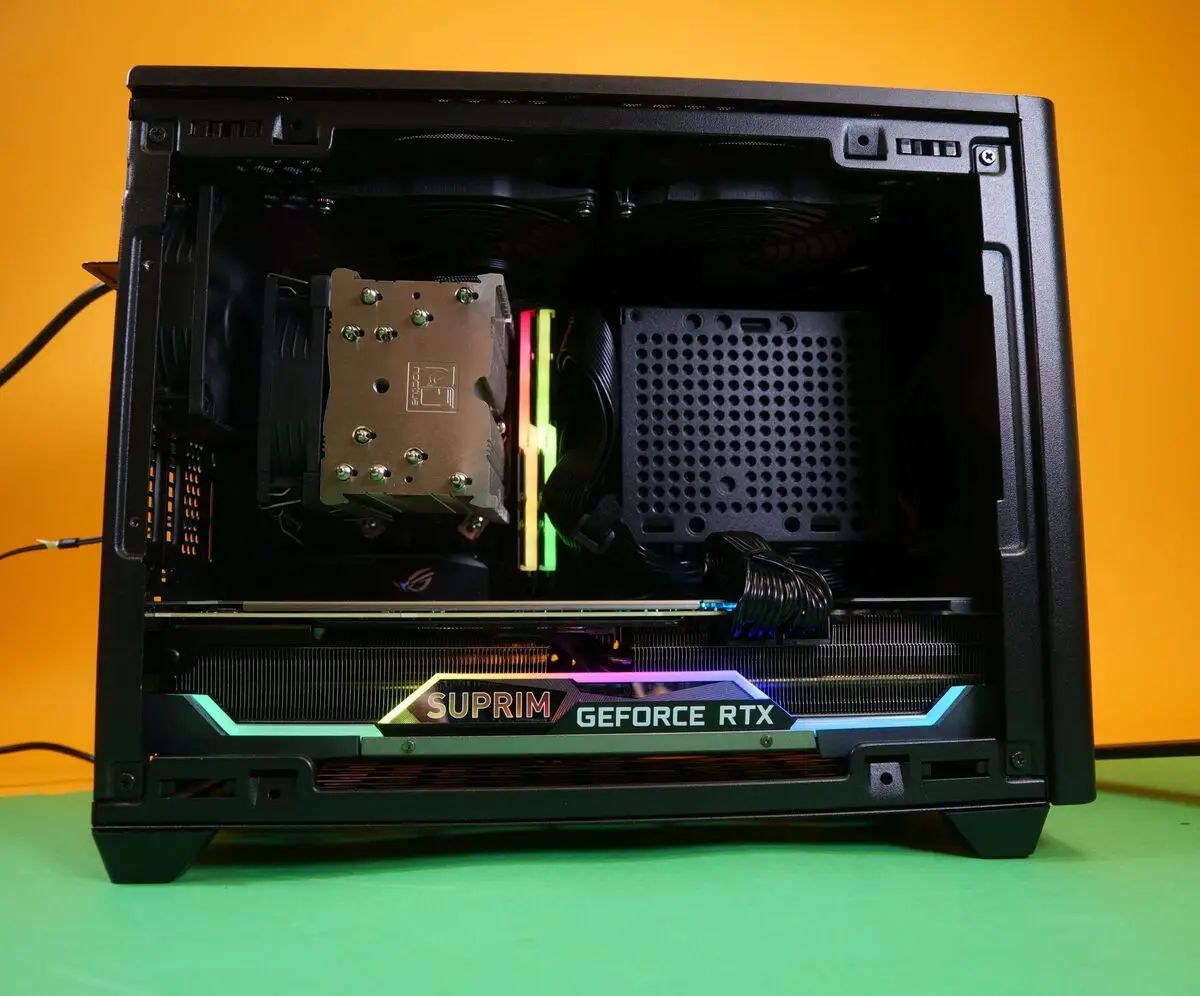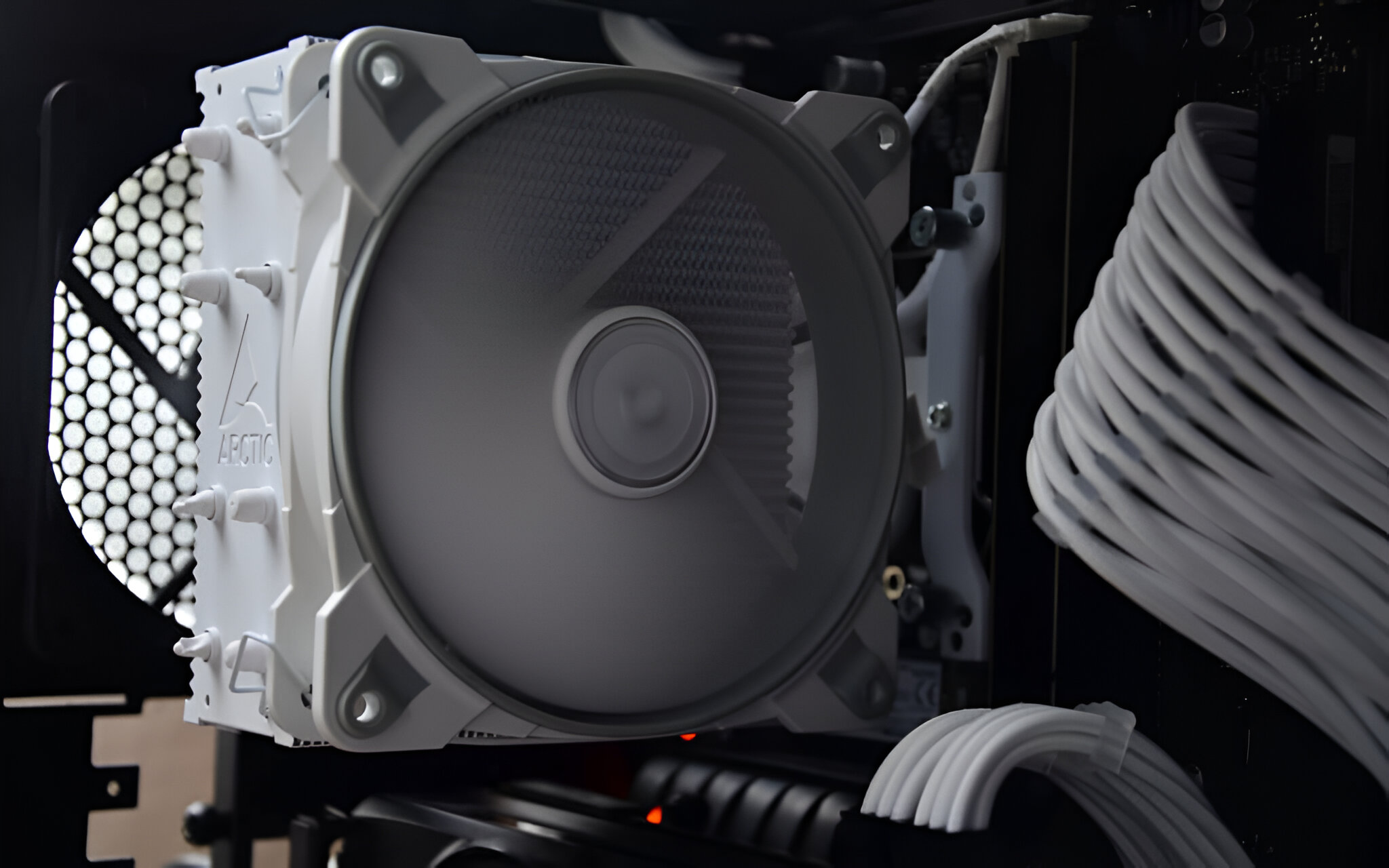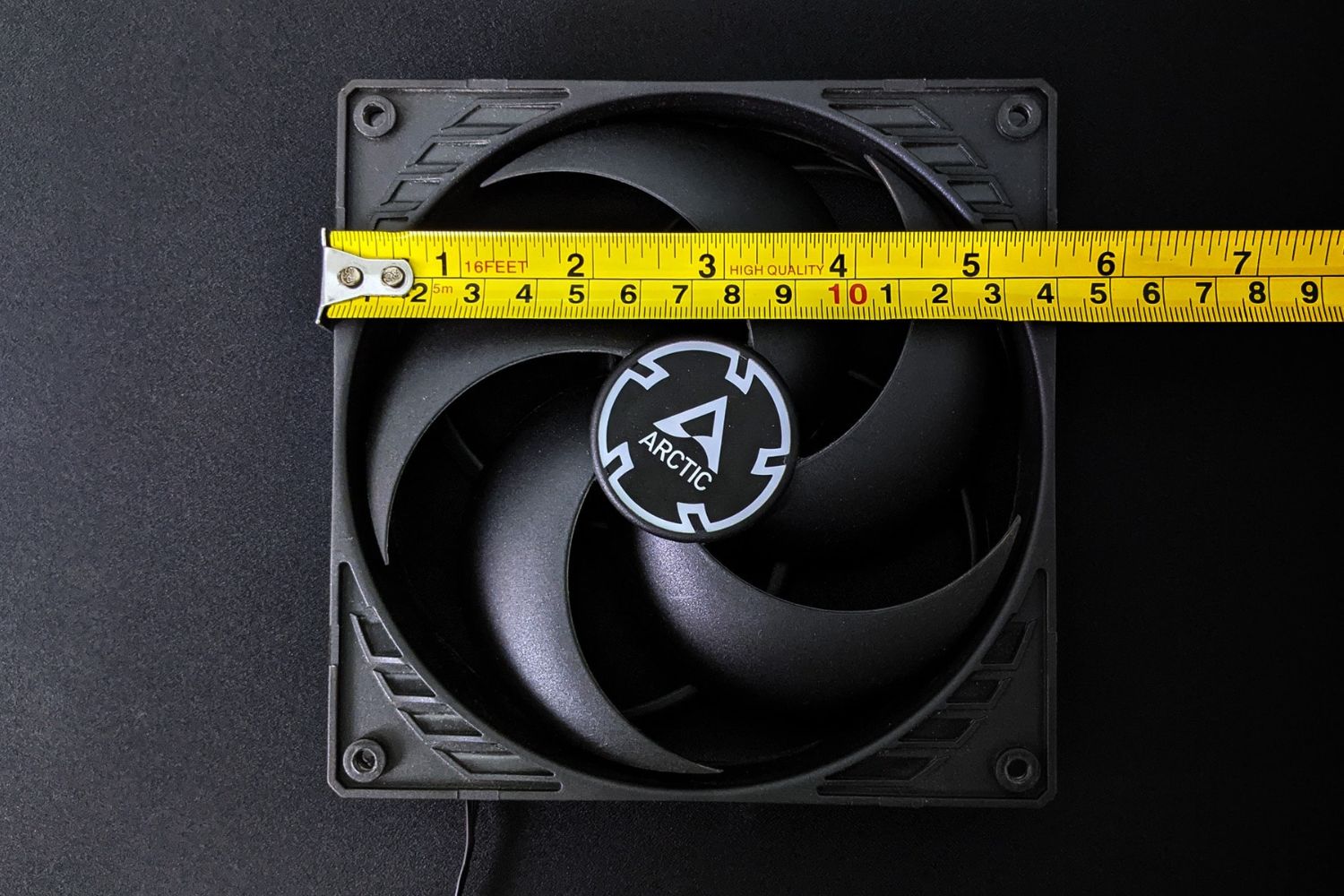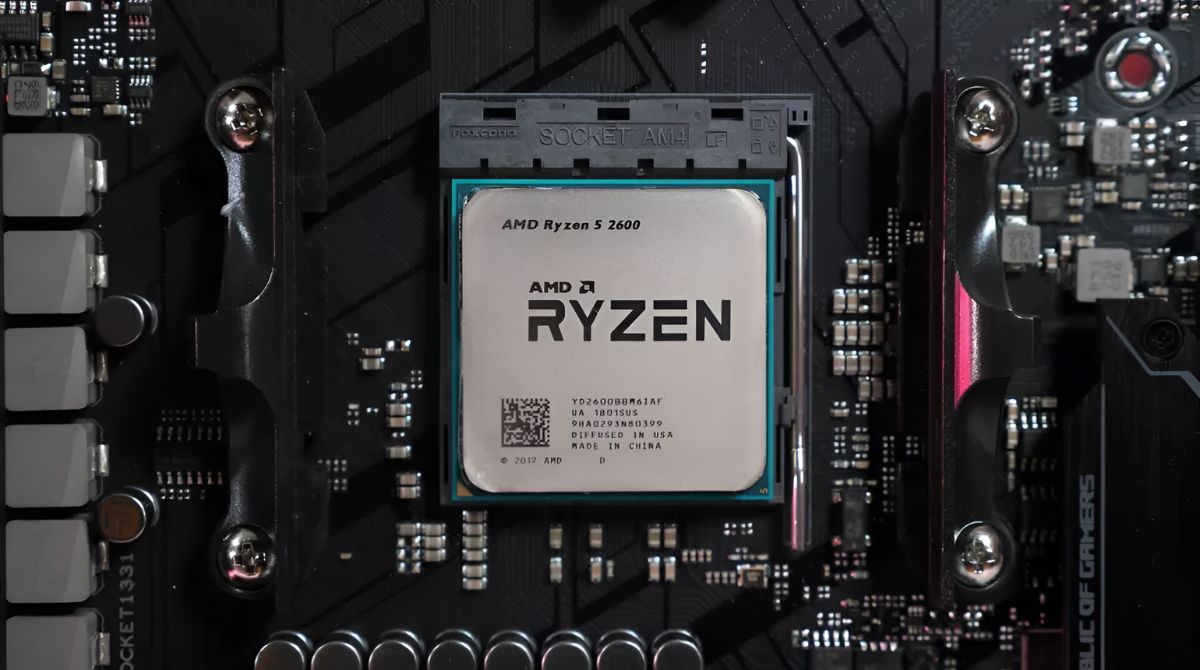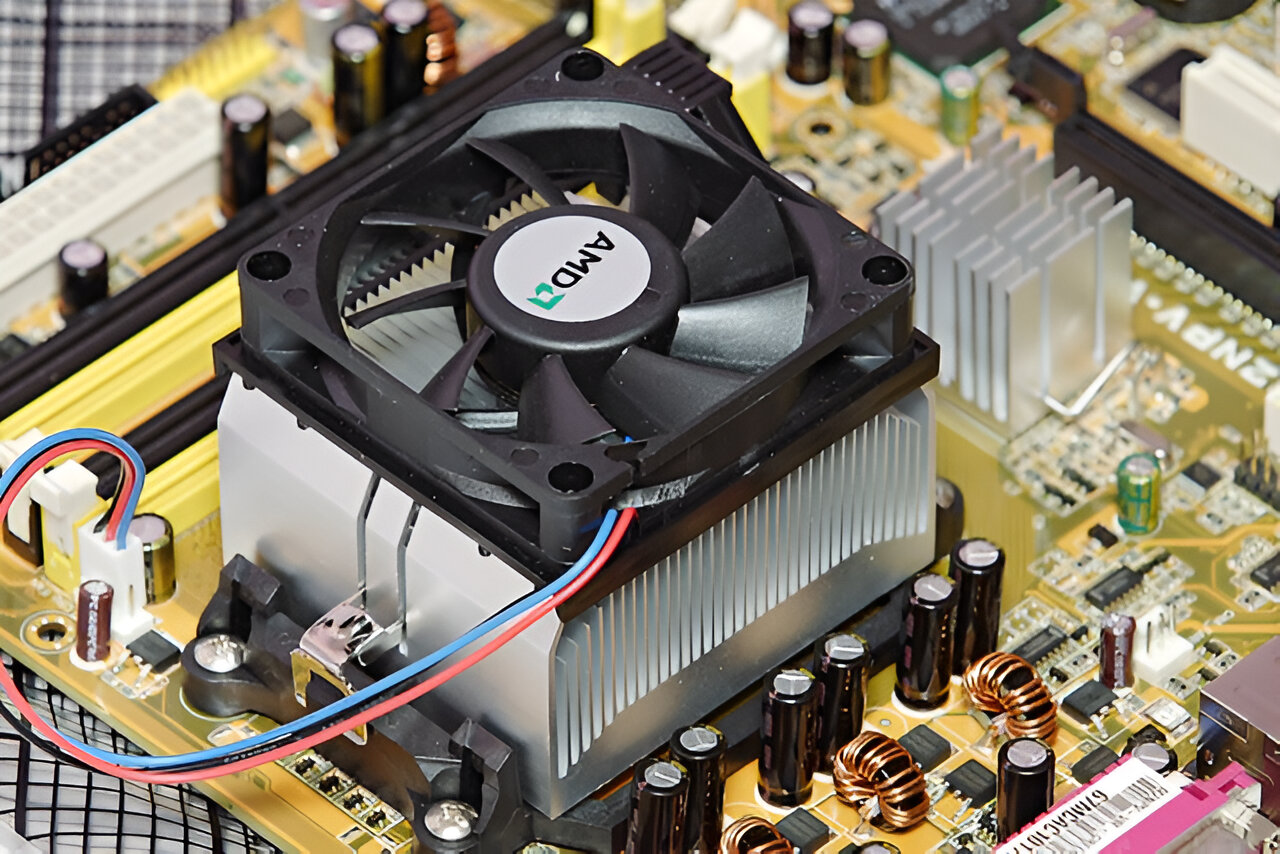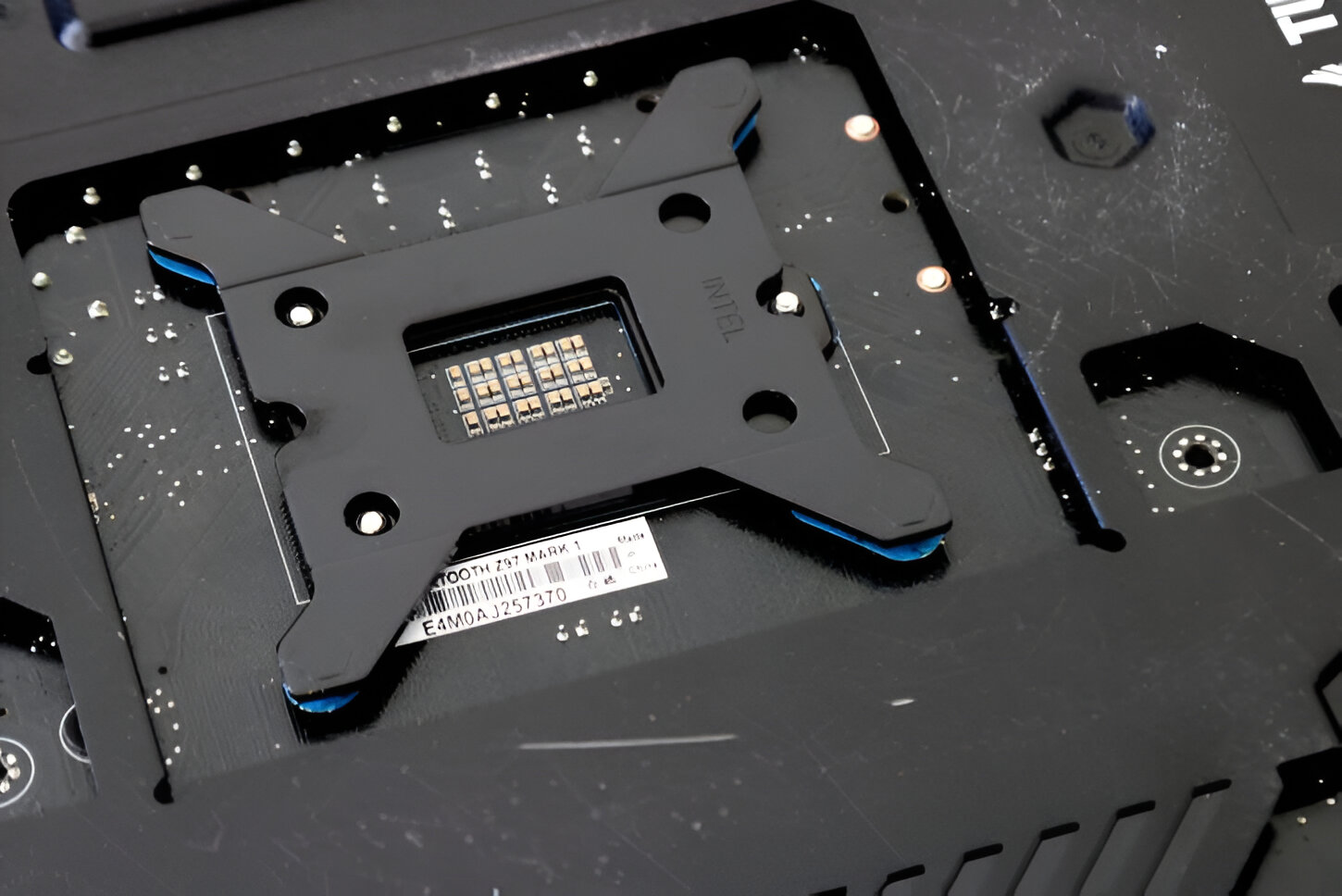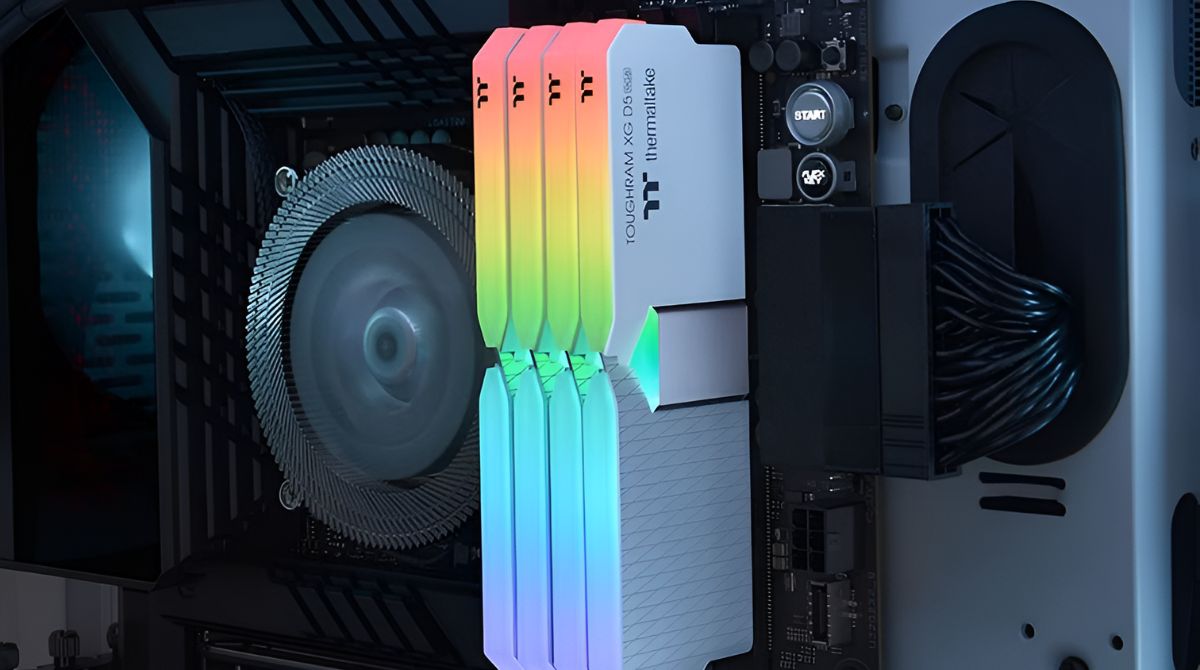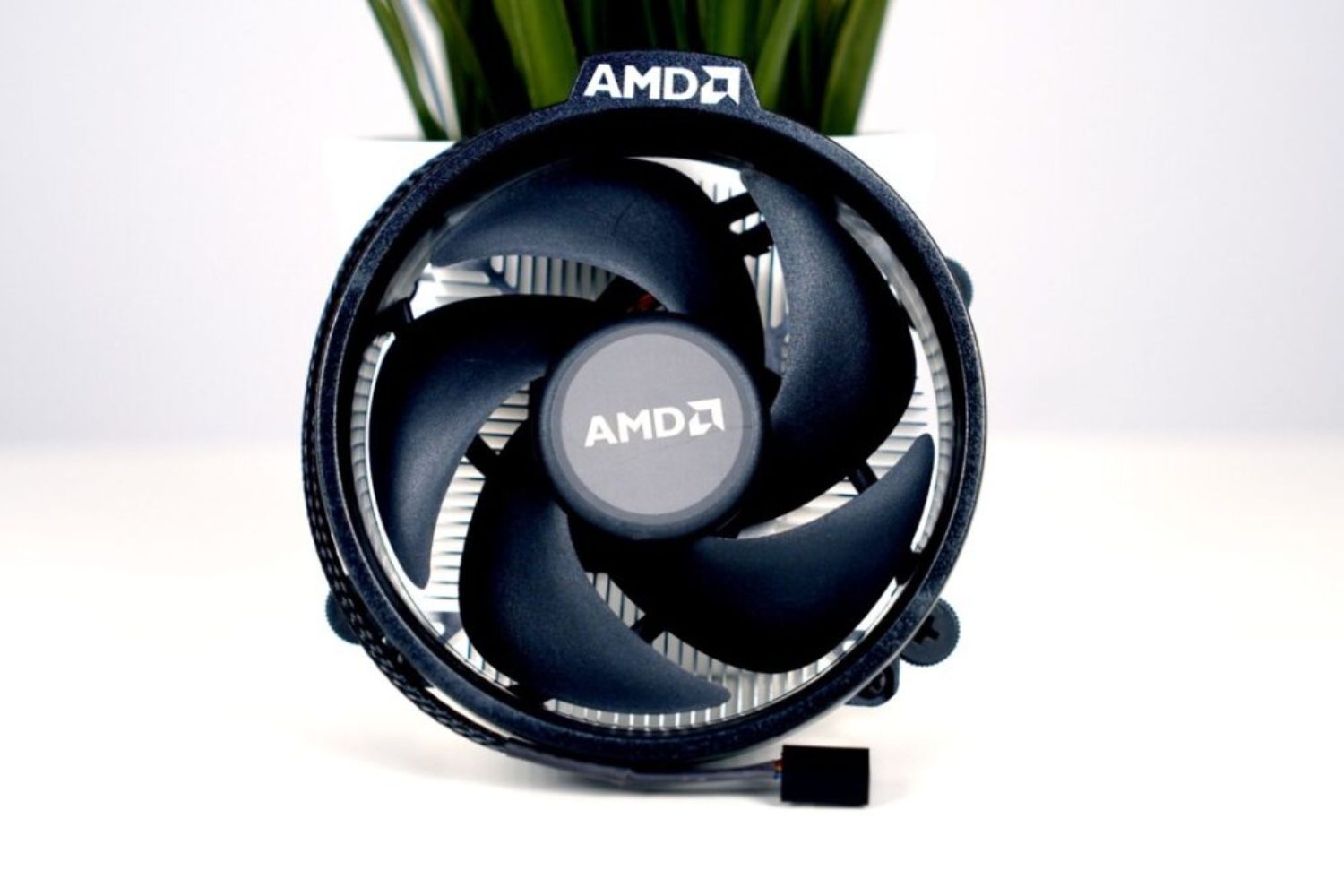Introduction
Welcome to a comprehensive guide on CPU cooler clearance! Whether you are building a new computer or upgrading your existing system, ensuring adequate clearance for your CPU cooler is crucial for optimal performance and longevity. A CPU cooler is responsible for dissipating heat generated by the processor, ensuring that it operates within safe temperature limits. Without sufficient clearance, the cooler may not be able to perform its job effectively, resulting in increased temperatures and a potential decrease in overall performance.
Clearance refers to the space required between the CPU cooler and other components such as the motherboard, RAM modules, and even the computer case. This space is necessary to allow for efficient airflow and to prevent any interference or contact between the cooler and other components. Different CPU cooler designs, sizes, and form factors require varying amounts of clearance to function properly.
While it may be tempting to overlook CPU cooler clearance and focus solely on aesthetics or cost, doing so can have detrimental effects on your system’s overall performance and stability. Inadequate clearance can lead to thermal throttling, which reduces the processor’s clock speed to prevent overheating, effectively slowing down your computer’s performance. It can also increase the risk of damaging components due to excessive heat buildup.
In this guide, we will delve into the factors that affect CPU cooler clearance, the importance of adequate clearance, how to measure clearance, and the recommended clearance for different coolers. We will also explore the benefits of having more clearance and the risks associated with insufficient clearance. Additionally, we will provide tips and techniques for adjusting cooler placement in cases with limited space to ensure optimal clearance.
So, whether you are a first-time builder or an experienced enthusiast, join us as we explore the world of CPU cooler clearance and discover how to keep your system running cool and efficient. Let’s dive in!
Factors that Affect Clearance
When it comes to CPU cooler clearance, several factors come into play. Understanding these factors will help you make informed decisions when selecting a CPU cooler and ensuring that it fits properly within your system.
1. Cooler Height: The height of the CPU cooler is a primary factor that affects clearance. Different coolers have varying heights, ranging from low-profile coolers designed for compact cases to high-performance tower coolers. It is crucial to check the maximum CPU cooler height supported by your case and ensure that the cooler you choose fits within those specifications.
2. Motherboard Socket: The socket type of your motherboard also influences CPU cooler clearance. Different sockets have different locations for the CPU, which can affect the clearance required for the cooler. It is essential to select a CPU cooler compatible with your motherboard’s socket to ensure proper alignment and clearance.
3. RAM Clearance: The position and height of the RAM slots on your motherboard can impact CPU cooler clearance. Some coolers have large heatsinks or bulky designs that may interfere with tall RAM modules. It is crucial to consider the height of your RAM modules and the clearance required by the cooler to avoid any compatibility issues.
4. Form Factor: The form factor of your CPU cooler plays a significant role in clearance. Tower coolers and low-profile coolers have different dimensions and designs, affecting the clearance required. Additionally, some coolers come with fans mounted on the cooler itself, increasing their overall height and requiring more clearance.
5. Fan Placement: The positioning of the fan(s) on the CPU cooler can also impact clearance. Some coolers have fans that sit above the heatsink, while others have fans that push air towards the motherboard or pull air away from it. It is essential to consider the fan’s placement and ensure that it does not interfere with other components or cables.
6. Case Size: The size of your computer case plays a role in determining the amount of CPU cooler clearance available. Compact cases often have limited vertical clearance, which may require the use of low-profile coolers or specific tower coolers that fit the case’s dimensions. Larger cases typically offer more clearance and can accommodate a wider range of CPU cooler options.
Considering these factors, it is crucial to research and select a CPU cooler that aligns with your specific requirements and system configuration. By carefully examining these factors, you can ensure the appropriate clearance for your CPU cooler and avoid any compatibility issues or performance limitations.
Importance of Adequate Clearance
Adequate clearance for your CPU cooler is of utmost importance for several reasons. It not only ensures optimal cooling performance but also safeguards the longevity and reliability of your system components.
1. Temperature Regulation: Proper clearance allows for efficient airflow around the CPU cooler, facilitating the cooling process. A well-cooled processor operates within safe temperature limits, preventing thermal throttling and performance degradation. With adequate clearance, the CPU cooler can effectively dissipate heat, keeping temperatures in check and maintaining optimal performance.
2. Cooling Efficiency: Insufficient clearance can impede the airflow around the CPU cooler, hindering its ability to efficiently cool the processor. This can lead to higher temperatures, increasing the risk of overheating and potentially causing damage to the CPU and other components. Adequate clearance promotes proper airflow, allowing the cooler to function optimally and maintain the desired temperatures.
3. System Stability: High temperatures due to inadequate clearance can negatively impact the stability and reliability of your system. Excessive heat can cause system crashes, freezes, and even component failure. By ensuring proper clearance, you minimize the chances of overheating-induced issues, resulting in a more stable and reliable system.
4. Component Longevity: Heat is one of the major factors that can decrease the lifespan of computer components. By providing adequate clearance for your CPU cooler, you help prevent excessive heat buildup. This, in turn, can prolong the lifespan of not only the CPU but also other components such as the motherboard, RAM, and GPU, saving you from costly repairs or replacements.
5. Compatibility and Upgradability: Adequate clearance ensures compatibility with other components in your system. It allows you to install and upgrade components without worrying about potential conflicts or limitations caused by space constraints. With enough clearance, you have the flexibility to choose from a wider range of cooling solutions, ensuring compatibility with future upgrades.
Considering the importance of adequate clearance for optimal cooling performance, system stability, and component longevity, it is crucial to prioritize this aspect when building or upgrading your system. By carefully selecting a CPU cooler that provides sufficient clearance and ensuring proper placement within your case, you can create an environment that promotes efficient cooling and prolongs the lifespan of your components.
How to Measure Clearance
Measuring CPU cooler clearance is an essential step in ensuring proper fit and compatibility within your system. By following these steps, you can accurately determine the clearance required for your CPU cooler:
1. Check CPU Cooler Specifications: Start by referring to the specifications provided by the CPU cooler manufacturer. Most manufacturers list the cooler’s dimensions, including height and width. Take note of these measurements as they will serve as a reference point for your clearance calculations.
2. Check Case Specifications: Next, check the specifications of your computer case. Look for the maximum CPU cooler height supported by the case. This information is usually provided in the case’s user manual or on the manufacturer’s website. Make sure to account for any additional components or cables that may affect the available clearance.
3. Account for Motherboard Standoffs: Measure the distance between the motherboard and the side panel of the case. This measurement should account for the height of the motherboard standoffs present in the case. These standoffs elevate the motherboard, creating space between the board and the case. Subtract the distance of the standoffs from the overall height measurement to determine the available clearance.
4. Consider RAM Height: If your CPU cooler design includes a large heatsink or fan overhang, make sure to check the dimensions and position of your RAM modules. Some coolers may have a recommended RAM clearance listed in their specifications. Measure the distance between the top of your RAM modules and the side panel of the case to ensure adequate clearance for both the CPU cooler and the RAM modules.
5. Allow for Additional Clearance: It is always a good idea to allow some additional clearance to ensure optimal airflow and avoid any potential interference. Adding a few millimeters to your calculated clearance measurement can prevent any unexpected compatibility issues and provide some room for adjustments.
By following these steps and carefully measuring the available clearance, you can confidently choose a CPU cooler that fits within your system. Remember to account for the dimensions of the cooler, the case limitations, the motherboard standoffs, and any other components that may impact the clearance. Accurate measurement ensures compatibility and helps you avoid any potential issues during installation.
Recommended Clearance for Different Coolers
The recommended clearance for CPU coolers can vary depending on the specific model, design, and size of the cooler. While it is essential to refer to the manufacturer’s specifications for precise clearance measurements, here are some general guidelines to consider:
1. Low-Profile Coolers: Low-profile coolers are designed for compact cases with limited vertical clearance. These coolers typically have a height of around 45mm to 75mm. To ensure proper fit, it is recommended to have a clearance of at least 10mm to 20mm above the cooler. This allows for sufficient airflow and prevents any potential interference with other components such as RAM modules or case fans.
2. Tower Coolers: Tower coolers are typically larger and offer superior cooling performance. The height of tower coolers can range from around 120mm to 180mm or more. It is recommended to have a clearance of at least 20mm to 30mm above the cooler for optimal airflow. This clearance also allows for ease of installation and removal of the cooler for maintenance purposes.
3. All-in-One Liquid Coolers: All-in-One (AIO) liquid coolers have become increasingly popular due to their efficient cooling capabilities. These coolers consist of a radiator and a pump connected by flexible tubing. The recommended clearance for AIO liquid coolers depends on the radiator size and fan configuration. As a general rule, it is advisable to have a clearance of at least 30mm to 50mm above the radiator to ensure proper airflow and installation.
4. Custom Liquid Cooling Systems: Custom liquid cooling systems offer the highest level of cooling performance but often require more significant clearance for the various components involved. The recommended clearance for custom liquid cooling systems depends on factors such as the radiator size, fan configuration, reservoir placement, and tubing routing. It is crucial to consult the manufacturer’s specifications and guidelines specific to your custom cooling setup for accurate clearance measurements.
Remember, these recommended clearance measurements are general guidelines and may vary depending on the specific model and design of the CPU cooler. It is always recommended to refer to the manufacturer’s specifications for precise clearance requirements.
By adhering to the recommended clearance guidelines, you can ensure proper airflow, prevent any potential conflicts with other components, and maximize the cooling efficiency of your CPU cooler. This not only helps maintain optimal performance but also prolongs the lifespan of your system components. Take the time to research and choose a CPU cooler that fits within your system’s clearance limitations to achieve the best cooling results.
Benefits of More Clearance
Having more clearance for your CPU cooler can provide several benefits and contribute to the overall performance and longevity of your system. Here are some advantages of having ample clearance:
1. Improved Airflow: More clearance allows for better airflow around the CPU cooler. Adequate space between the cooler and other components ensures that air can freely circulate, carrying away heat from the processor. This enhanced airflow helps in maintaining lower temperatures and improves the overall cooling efficiency of the system.
2. Reduced Noise Levels: With increased clearance, CPU coolers can operate at a lower RPM (Revolutions Per Minute) or fan speed. This results in reduced noise levels as the fans do not need to work as hard to dissipate heat. Enjoying a quieter computing experience is especially beneficial for those who require a more peaceful working or gaming environment.
3. Flexibility for Upgrades: More clearance provides flexibility for future upgrades. It allows you to install larger or more powerful CPU coolers if you decide to upgrade to a more demanding processor. Additionally, having extra clearance enables compatibility with other components, such as taller RAM modules or additional case fans, that you might want to add to your system down the line.
4. Easier Maintenance: Ample clearance makes maintenance tasks, such as cleaning the CPU cooler or replacing thermal paste, more straightforward. Having enough space allows for easier access to the cooler, making these tasks less time-consuming and reducing the risk of accidentally damaging other components during maintenance procedures.
5. Better Overclocking Potential: Overclocking is the process of increasing a processor’s clock speed beyond its factory-set limits to achieve higher performance. More clearance allows for better cooling, thereby supporting higher overclocking potential. This additional headroom enables you to push your CPU to higher frequencies, resulting in improved overall system performance.
6. Enhanced Component Lifespan: Ample clearance ensures that the CPU and other components operate within optimum temperature ranges. Lower temperatures contribute to increased component lifespan, as excessive heat can degrade and shorten the life of sensitive electronic parts. By providing more clearance, you help maintain lower temperatures, reducing the risk of premature component failure.
Having more clearance for your CPU cooler offers various benefits in terms of airflow, noise reduction, flexibility for upgrades, easier maintenance, overclocking potential, and component longevity. These advantages contribute to a more efficient and reliable system while providing room for customization and future expansion. Therefore, it is advisable to prioritize adequate clearance when selecting a CPU cooler for your system.
Risks of Insufficient Clearance
Insufficient clearance for your CPU cooler can pose several risks and negatively impact the performance, stability, and lifespan of your system. Here are some risks associated with inadequate clearance:
1. Restricted Airflow: Without enough clearance, the CPU cooler may have limited space for airflow. This restriction can impede the cooling performance, causing higher temperatures. As a result, the processor may throttle its speed to prevent overheating, leading to reduced performance and slower system operation.
2. Increased Heat Buildup: Insufficient clearance restricts the flow of fresh air to the CPU cooler, impacting its ability to dissipate heat effectively. This can result in increased heat buildup within the system. High temperatures can cause instability, decrease the reliability of components, and potentially lead to system crashes or unexpected shutdowns.
3. Interference with Components: Inadequate clearance can result in direct contact or interference between the CPU cooler and other components such as RAM modules, motherboard components, or case fans. This interference can cause physical damage to components, bent or broken pins, or even dislodging of connectors. It may also increase the risk of electromagnetic interference, affecting the performance of sensitive electronic parts.
4. Compromised Component Lifespan: Excessive heat caused by insufficient clearance can reduce the lifespan of sensitive components within your system. Higher temperatures can cause accelerated wear and tear, degrade electrical performance, and potentially lead to premature component failure. Components such as the CPU, motherboard capacitors, and VRMs are particularly vulnerable to heat-related damage.
5. Noise and Performance Trade-offs: Inadequate clearance can force the CPU cooler’s fans to work harder to compensate for the restricted airflow. This can result in increased noise levels as the fans spin at higher speeds. Additionally, the cooler may not be able to cool the processor efficiently, leading to performance degradation and reduced system responsiveness.
6. Compatibility and Installation Challenges: Insufficient clearance can create challenges during the installation process. It may require you to modify or remove existing components, such as tall RAM modules or case fans, to accommodate the CPU cooler. This can be time-consuming, and in some cases, incompatible components may need to be replaced, adding additional cost and inconvenience.
To mitigate these risks, it is crucial to prioritize adequate clearance when selecting a CPU cooler for your system. Always refer to the manufacturer’s specifications and guidelines to ensure compatibility and proper fit within your case. By allowing sufficient clearance, you can avoid potential issues, maintain optimal cooling, and safeguard the long-term health and performance of your system.
Adjusting Cooler Placement for Better Clearance
If you find that there is insufficient clearance for your CPU cooler, you can explore different placement options to improve the clearance and ensure proper functionality. Here are some strategies for adjusting cooler placement:
1. Reorient the Fan: If the CPU cooler has a fan that is causing interference, consider reorienting it to a different position. For tower coolers, you can often adjust the fan’s placement to blow air towards the front or rear of the case instead of upwards towards the motherboard. This adjustment can help create more clearance for other components, such as RAM modules or case fans.
2. Adjust Cooler Height: Some CPU coolers allow for height adjustments. By lowering the height of the cooler, you may create additional clearance above the cooler for improved airflow and compatibility with other components. However, be sure to not compromise proper contact between the cooler and the CPU, as it is essential for efficient heat transfer.
3. Swap Components: If you are facing clearance issues due to tall RAM modules, consider switching to low-profile RAM modules. Low-profile RAM modules have a shorter height and can help create more clearance between the CPU cooler and the memory slots. This swap ensures compatibility while maintaining optimal cooling performance.
4. Upgrade to a Different Cooler: If adjusting the placement does not provide sufficient clearance, you may need to consider upgrading to a different CPU cooler model that offers a more compact design or better compatibility with your system. Ensure that the new cooler meets your cooling requirements and fits within your case’s clearance limitations.
5. Use an AIO Liquid Cooler: All-in-One (AIO) liquid coolers consist of a radiator and a pump connected by flexible tubing. By mounting the radiator in a different location, such as the front or top of the case, you can free up additional clearance near the CPU socket. This flexibility allows for better clearance and compatibility with other components.
6. Modify the Case: In extreme cases, modifying the case itself may be necessary to create more clearance for the CPU cooler. This could involve removing or relocating obstructing components, such as hard drive cages, to maximize available space. However, this option requires careful consideration and should only be attempted if you have the necessary skills and knowledge.
Remember, when adjusting cooler placement, it is crucial to ensure that the cooler is securely mounted and maintains proper contact with the CPU surface. Improper installation can lead to reduced cooling efficiency and potential damage to the processor.
By exploring these strategies and adjusting the placement of your CPU cooler, you can improve clearance, ensure proper airflow, and minimize any compatibility issues. Striving for optimal clearance will help maintain the performance, stability, and longevity of your system.
Tips for Ensuring Clearance in Small Cases
Building a system in a small case can present unique challenges when it comes to ensuring adequate clearance for your CPU cooler. However, with careful planning and consideration, you can optimize the available space and ensure proper clearance. Here are some tips to help you ensure clearance in small cases:
1. Choose a Low-Profile Cooler: Opt for a low-profile CPU cooler specifically designed for small form factor cases. These coolers are generally shorter in height and offer better compatibility with limited vertical clearance. By selecting a low-profile cooler, you can maximize the available space and ensure proper airflow around the CPU.
2. Measure Clearance Carefully: Before purchasing a CPU cooler, measure the maximum vertical clearance available in your small case. This will help you choose a cooler that fits within the space limitations. Ensure that you account for any additional components, such as a power supply or cables, that may occupy space near the CPU socket.
3. Consider the Cooler’s Width: In small cases, width can also be a limiting factor. Ensure that the CPU cooler’s width is compatible with the available space around the CPU socket. It is essential to consider any surrounding components, such as RAM modules or motherboard heatsinks, that may affect the available width for the cooler.
4. Optimize Cable Management: Efficient cable management can make a significant difference in creating additional clearance in small cases. Route cables neatly and secure them using cable ties or straps. This practice helps prevent cables from obstructing the CPU cooler or impeding airflow. Consider using custom-length cables or aftermarket cable extensions to reduce clutter in tight spaces.
5. Utilize Compact Motherboards: Choose a small form factor motherboard that offers a compact layout. Mini-ITX motherboards, for example, have a smaller footprint and can provide more space around the CPU socket. This additional space allows for better clearance and helps in accommodating larger or taller CPU coolers.
6. Consider Fan Placement: Pay attention to the placement of case fans when choosing a CPU cooler. Ensure that the cooler’s height and design do not obstruct the intake or exhaust airflow from case fans. Proper airflow management can help maintain lower temperatures and improve overall system cooling efficiency.
7. Use Liquid Cooling Solutions: All-in-One (AIO) liquid coolers can be a viable option in small cases. AIO coolers generally have a smaller footprint and provide greater flexibility in mounting options. Installing a compact AIO cooler with a low-profile radiator can help maximize clearance around the CPU without compromising cooling performance.
8. Consider External Cooling: In some situations, it may be necessary to consider external cooling solutions, such as open-air coolers or passive heatsinks. These options can help mitigate clearance limitations within small cases, as they do not rely on tight internal space for installation.
Remember to consider the specific limitations and requirements of your small case when implementing these tips. Each case presents unique challenges, and finding the right balance between optimal clearance and effective cooling is crucial. By carefully selecting components and employing smart configuration strategies, you can ensure adequate clearance and maintain optimal performance in your small case build.
Conclusion
CPU cooler clearance is a critical consideration when building or upgrading a computer system. Adequate clearance ensures optimal cooling performance, system stability, and component longevity. By understanding the factors that affect clearance, measuring it accurately, and selecting a CPU cooler that fits within the available space, you can maintain efficient cooling and prevent potential issues.
Proper clearance allows for improved airflow, reduced temperatures, and quieter operation. It also provides flexibility for future upgrades, easier maintenance, and better overclocking potential. Conversely, insufficient clearance can lead to restricted airflow, increased heat buildup, component interference, and compromised system performance.
To ensure clearance, consider adjusting cooler placement, using low-profile options for small cases, and carefully managing cables and components. When needed, upgrading to liquid cooling solutions or modifying the case can help create more space. Adhering to recommended clearance guidelines and manufacturer specifications is crucial for maintaining compatibility and optimal cooling efficiency.
Overall, by prioritizing CPU cooler clearance, you can create a system that operates at optimal temperatures, promotes stability, and prolongs the lifespan of your components. Take the time to research and select a cooler that fits within your clearance limitations, ensuring a smooth and efficient computing experience for years to come.







